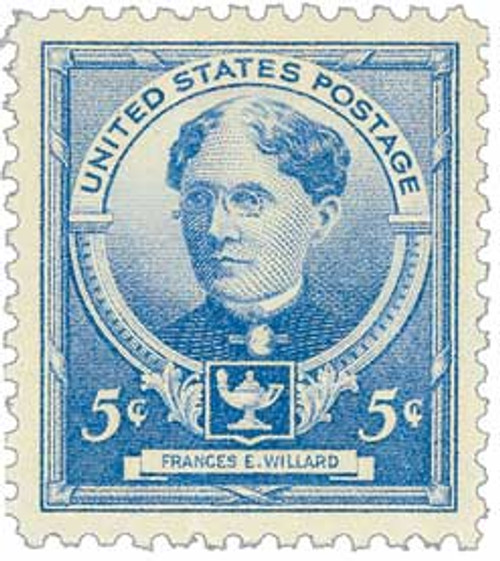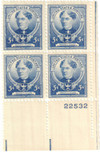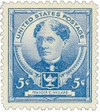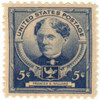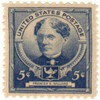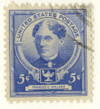
1940 Famous Americans: 5c Frances E. Willard
# 872 - 1940 Famous Americans: 5c Frances E. Willard
$0.90 - $82.00
U.S. #872
1940 5¢ Frances Elizabeth Willard
Famous Americans Series: Educators
1940 5¢ Frances Elizabeth Willard
Famous Americans Series: Educators
Issue Date: March 28, 1940
First City: Evanston, Illinois
Quantity Issued: 20,729,030
Printed by: Bureau of Engraving and Printing
Printing Method: Rotary Press
Perforation: 10 ½ x 11
Color: Ultramarine
First City: Evanston, Illinois
Quantity Issued: 20,729,030
Printed by: Bureau of Engraving and Printing
Printing Method: Rotary Press
Perforation: 10 ½ x 11
Color: Ultramarine
Featured on U.S. #872, Frances Willard became president of the Evanston College for Ladies in 1871. Two years later, it merged with Northwestern University and Willard was named Dean of Women for the Women's College.
Willard's greatest impact was in the suffrage and temperance movements. She was a strong advocate of a woman's right to vote, basing it on a concept of "Home Protection" in which women could use voting to obtain protections against the effects of liquor. Willard was the first woman honored in the U.S. Capitol's Statutory Hall, where statues of America's greatest leaders are displayed.
U.S. #872
1940 5¢ Frances Elizabeth Willard
Famous Americans Series: Educators
1940 5¢ Frances Elizabeth Willard
Famous Americans Series: Educators
Issue Date: March 28, 1940
First City: Evanston, Illinois
Quantity Issued: 20,729,030
Printed by: Bureau of Engraving and Printing
Printing Method: Rotary Press
Perforation: 10 ½ x 11
Color: Ultramarine
First City: Evanston, Illinois
Quantity Issued: 20,729,030
Printed by: Bureau of Engraving and Printing
Printing Method: Rotary Press
Perforation: 10 ½ x 11
Color: Ultramarine
Featured on U.S. #872, Frances Willard became president of the Evanston College for Ladies in 1871. Two years later, it merged with Northwestern University and Willard was named Dean of Women for the Women's College.
Willard's greatest impact was in the suffrage and temperance movements. She was a strong advocate of a woman's right to vote, basing it on a concept of "Home Protection" in which women could use voting to obtain protections against the effects of liquor. Willard was the first woman honored in the U.S. Capitol's Statutory Hall, where statues of America's greatest leaders are displayed.

